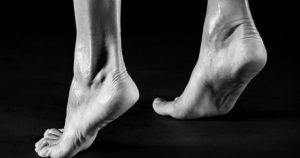Continuing our topic on RUNNING (read part 1 if you haven’t yet), we arrive at the most honest part of your body: YOUR FEET!
Your feet need to be functional in order to move well. That’s a very general statement but it’s true, so I’m keeping it. What characteristics does a functional foot have? Mobility and adaptive feedback (and they actually are considered to be the most honest part of the body; DM me if really want to know why).
Mobility is obvious. We have 26 bones and 33 moveable joints in each foot and if they do not move, the forces of walking and running will go somewhere else (cue in almost lower extremity repetitive stress injury).
Adaptive feedback or proprioception is the concept that our feet should be reactive to the ground below us, which will provide your brain with information to help you balance. This can get a little geeky, so I’ll try to keep it easy. Our feet should be athletically ready to adapt to the ground underneath us. One of the most frequent injuries related to running is plantar (plantar fascitis is most popular) or achilles (tendinosis) problems.
There can be a lot of issues contributing to these injuries, but the act of “clawing” the feet is something I found to be very common. Clawing or curling the toes while in the shoe will create excessive tension in the foot and decrease its sensory feedback to the brain. The tension from clawing is also linked to the lack of core engagement. If your feet are “gripping the ground” then they are trying to stabilize your balance, which is something your midline should be doing. If your midline is not working, then your body will find other ways to compensate; this usually leads to extremity or peripheral injuries (side note: Dr. Perry Nickelston of Stop Chasing Pain designed an entire course built around core resets and finding your body’s compensatory patterns).

Bunion formation
I’m almost finished with my foot geekiness, but I MUST talk about one more ridiculously important thing: the big toe, the hallucis, the great toe, the first digit, and more specifically the first metatarsophalangeal joint (that’s why we just say big toe). The big toe must be able to extend at least 65 degrees. Sometimes I assess people who have about 5 degrees. Others who are limited will likely develop the dreaded bunion. Although this can be hereditary, you can always see where your extension is and do some mobility to improve it. If you have a bunion starting to form, get a spacer and work your extension. Check out the video below showing why your lack of big toe extension can lead to a nice bunion.
Okay, let’s bring it back to running. If you’re running with a tense foot, it will cost you energy, potential injury, and inefficiency. Running without big toe extension will lead to a lot of compensations that can open a whole bag of worms. If you want that bag opened, DM me.
Make sure to watch our 2 video series on Bunion Prevention and Exercises for Bunions, hope this helps!
How to Prevent Bunions:
Here’s how to fix your big toe extension:


